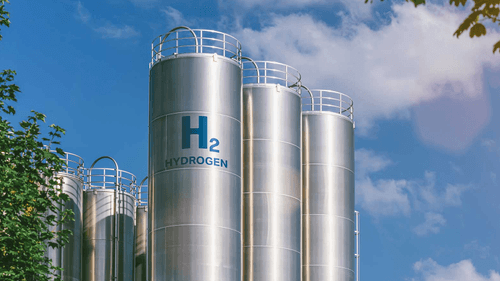California Resources Corporation (CRC) today announced a carbon dioxide management agreement (CDMA) between Carbon TerraVault JV Holdco, LLC (CTV JV) and Lone Cypress Energy Services, LLC (Lone Cypress), an independent energy company focused on the development of low-carbon hydrogen generation facilities and energy infrastructure, to sequester 100,000 metric tons (MT) of carbon dioxide (CO) per annum from a newly constructed blue hydrogen plant at the Elk Hills Field in Kern County.
CRC owns 51% of the CTV JV with Brookfield Renewable owning the remaining 49% interest.
Called the Lone Cypress Hydrogen Project, the project aims to be California’s first blue hydrogen facility producing 30 tons per day and has the potential to expand to 60 tons per day of blue hydrogen with up to 200,000 MT of CO2 sequestration per annum, according to a news release.
Blue hydrogen is a net zero-carbon intensity fuel produced from natural gas. The CO2 generated during the methane reforming process is captured and will be stored permanently underground.
“We are excited to be at the forefront of the energy transition in California. CRC is enabling the net zero energy economy by partnering with Lone Cypress to site a brand-new hydrogen facility at our Elk Hills Field as well as offering permanent CO2 sequestration through Carbon TerraVault,” said Mac McFarland, CRC’s president and chief executive officer. “Because capture and compression are built into the project development, we anticipate limited capital requirements from the CTV JV and EBITDA per metric ton within our previously stated range. This CTV storage project is a meaningful step forward in CRC’s rollout of carbon capture and sequestration technology across the state and is the first of, what we believe, will be many projects to come. We are also excited about the ability to leverage our Elk Hills asset to create a Net Zero Industrial Park by combining green field development and carbon sequestration.”
CDMA Highlights:
- The CDMA frames the contractual terms between parties by outlining the material economics and terms of the project and includes conditions precedent to close. The CDMA provides a clear path for the parties to reach final definitive documents and a Final Investment Decision (FID)
- The Lone Cypress Hydrogen Project will employ a proprietary steam methane reformation technology with an integrated carbon capture system. The facility is expected to produce 30 tons per day of hydrogen at startup with the ability to expand to 60 tons per day of hydrogen which is under consideration. This translates to an initial 100,000 MT per annum of associated CO2 that will be permanently sequestered through CTV or 200,000 MT per annum of CO2 that will be permanently sequestered if the project is expanded
- Project FID is targeted in late 2023, with full operations by the end of 2025, in line with the CTV JV’s stated goal of first injection in 2025
- The CDMA provides Lone Cypress with access to 50 surface acres at the Elk Hills Field with the option for an additional 50 acres if expansion to a 60 ton per day project is pursued
- The CTV JV will provide infield transportation and a permanent CO2 sequestration site at 26R in exchange for an injection fee on a per ton basis that fits within the previously disclosed economic type-curve for projects that require a storage-only solution
- The project’s location at Elk Hills will eliminate the need for long haul CO2 transportation and certain midstream capital requirements
- CO2 capture capital will be effectively eliminated as CO2 capture equipment, the most capital-intensive portion of carbon capture and sequestration (CCS) projects, will be built into the design of the new Lone Cypress hydrogen facility
- These project attributes will enable CTV JV and Lone Cypress to supply cost competitive, blue hydrogen to California’s burgeoning zero emissions mobility and industrial markets
- In addition, the CTV JV has the right to take a majority equity stake in the project, as well as to provide sequestration services for all subsequent Lone Cypress hydrogen projects in California
“Partnering with CTV JV represents an incredible opportunity to continue the growth of our hydrogen and carbon capture businesses. California is at the forefront of the global energy transition and through this partnership, we intend to be a leader in its low-carbon fuels market,” said Greg Brooks, President and Founder of Lone Cypress Energy Services. “CTV’s unique expertise in subsurface operations and permitting, large CO2 storage position and ability to deliver on highly complex and capital-intensive projects provide us with a clear line of sight as we continue to evaluate additional projects in California. We are excited to generate the first blue hydrogen molecule in the state of California and provide the market with a low-cost low-carbon option to meet its decarbonization goals.”







